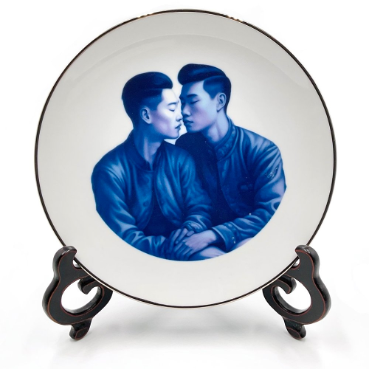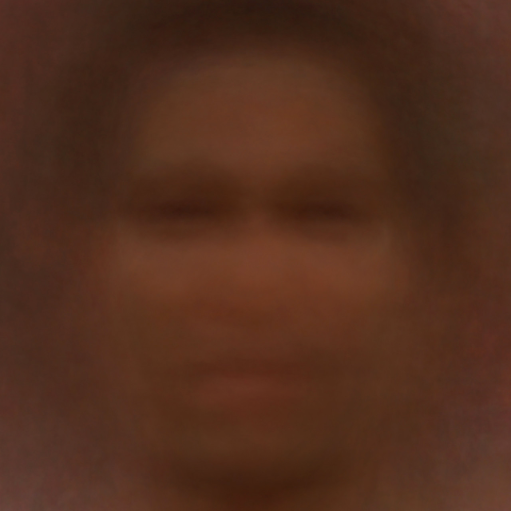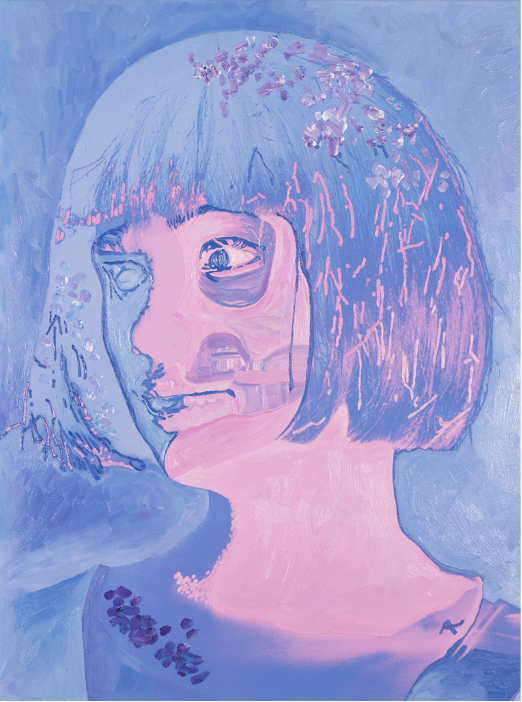Blurring the Lines: Art at the Intersection of Human and Artificial Creativity
By Grace Miller, Graduate Research Fellow for Arts & Humanities Futures
September 15, 2024
By Grace Miller, Graduate Research Fellow for Arts & Humanities Futures
September 15, 2024

When you enter the doors of the Grunwald Gallery’s new exhibit on AI and art practice, you are confronted with plates. Adam Chau’s installation, “Generated Love,” is made of countless breakable circles of blue and white china reminiscent of Ming dynasty porcelain hung in neat rows on the wall depicting couples in embrace. Immediately, you’re pulled into a human history, looking at human relationality, conscious of the human hands that hung these circles individually. But where is the AI? What part of the piece was done by humans and what was done by machine?
This is exactly the blurriness co-curators Caleb Weintraub, member of the AI Futures Initiative, and Linda Tien want visitors to experience when visiting their show, “Blurring the Lines: Art at the Intersection of Human and Artificial Creativity.” Rather than showing the side of AI that the public typically encounters (think: cheating on exams, too-smooth renderings of robots on horses, idealized images of young women) this show seeks to encourage people to reframe and think about how AI can be used in a somewhat traditional artistic manner-- as a tool to comment on broader cultural and social conditions. Some of the works in the show are more sensational, and some will raise questions on who did the work-- how much did the robot do, how much is the brand, how much is spectacle.
These artists are using AI and machine learning to supplement their processes, not as an end in itself. “These are all heavily ‘human in the loop’ projects,” explains Weintraub. Instead, they all engage with the complicated reality of AI in various ways, often using AI to call attention to flaws in AI itself: “there’s just a lot of missing data.”
Johann Diedrick’s “Dark Matter” investigates the absence of Black voices in AI training data, utilizing an undulating dark void to symbolize this erasure, and Dennis Delgado’s “Dark Database” confronts biases embedded in AI facial recognition system, also trained on a primarily anglo-Western dataset, through the technique of blur, a face almost rendered, but fading spectorally into the background. For Tien and Weintraub, thinking about the impact of these algorithmic biases was one of the important things to elevate in the works they chose, both in the present moment and in the future. “We’re still having blind spots, and these types of historical projects remind us to be careful. They’re only as good as the knowledge we can give them. They’ll learn our flaws really well.”

Other works explore the boundaries between biological and artificial entities at the material level. Scientists from Tufts University and the University of Vermont showcase their “Zenobots,” tiny, programmable organisms designed by AI and made from frog embryo cells that would have evolved into skin cells. “This is a new thing, it’s a new organism, as it were. And because it can be programmed, it’s a kind of robot,” explains Weintraub. The scientists sculpt these cells according to AI recommendations, and it’s the form itself that dictates the function of the new cells-- ask AI to program them to walk, and it will tell you what shape to sculpt them into. This project, along with its artistic value, will likely also have use in medical and environmental situations.
The show even includes the art of an AI artist-- Ai-Da is the “world’s first ultra-realistic artist robot” who has gained international recognition after giving a TED Talk, been exhibited at the Tate Modern and the Venice Biennale, and presented at the United Nations ‘AI for Good’ Global Initiative. Ai-Da’s “Self Portrait” not only questions the nature of imagination and selfhood in the age of AI, but also invites questions of authorship. Who is capable of creating, and what is the degree to which AI can create without intervention from the development team? Her “Self Portrait” interrogates not only the self portrait genre, but the very notion of self and self-representation.

For Weintraub, the collaboration with Linda Tien was integral to shaping the curatorial story of the show. Tien is the Director of the Grunwald Gallery of Art along with being an artist herself, giving them a shared aesthetic overlap that helped fit different works into a dialogue. Their main question-- how do you frame these works as art? The two winnowed down a list of over 300 established artworks to under 15, as well as holding an open call for the show in the hope to showcase the work of a few emerging artists that may not originally have had the chance to be seen. For Weintraub, he “think(s) the show reflects my artistic taste, in a way. My work is more pictorial, but that’s not what the art world is exclusively. This show reflects a taste and interest in reflecting social and cultural interests that embrace technology and also use AI to call attention to flaws in AI.”

The exhibition oscillates from sound to performance, from novel creation to endless iteration. Importantly, these exhibits introduces the visitor to a virtual space where visitors and AI agents co-create evolving interaction, reconsidering traditional notions or art, authorship, and social engagement. The common thread is engagement, is continual movement. As you walk through the exhibition space, you encounter countless moving screens, sonic soundscapes, shifting sculptures. By showcasing works that push the boundaries between biological and artificial creation, “Blurring the Lines” encourages reflection on AI’s continual evolvement, emphasizing that our relationality to AI creation, and, perhaps, AI itself, is in perpetual flux. Considering the implications on art and society, the exhibition seems to suggest, must therefore also be an ongoing, attentive process.
“Blurring the Lines” was realized through the IU Arts and Humanities AI + Digital Futures Initiative, initially launched in the fall of 2023 to investigate the impact of technology across the arts and humanities through human senses and embodied practices and experiences. This team works collaboratively with programs and departments across IU-Bloomington and the IU campuses more broadly, most recently collaborating with and among the Luddy School of Informatics, Computing, and Engineering; the Media School; the Eskenazi School; the College of Arts and Sciences; and IU Indianapolis.
“Blurring the Lines: Art at the Intersection of Human and Artificial Creativity”
Open from Tuesday, September 03, 2024 – Saturday, November 16, 2024
Grunwald Gallery of Art
Fine Arts Building 123
1201 E Seventh Street